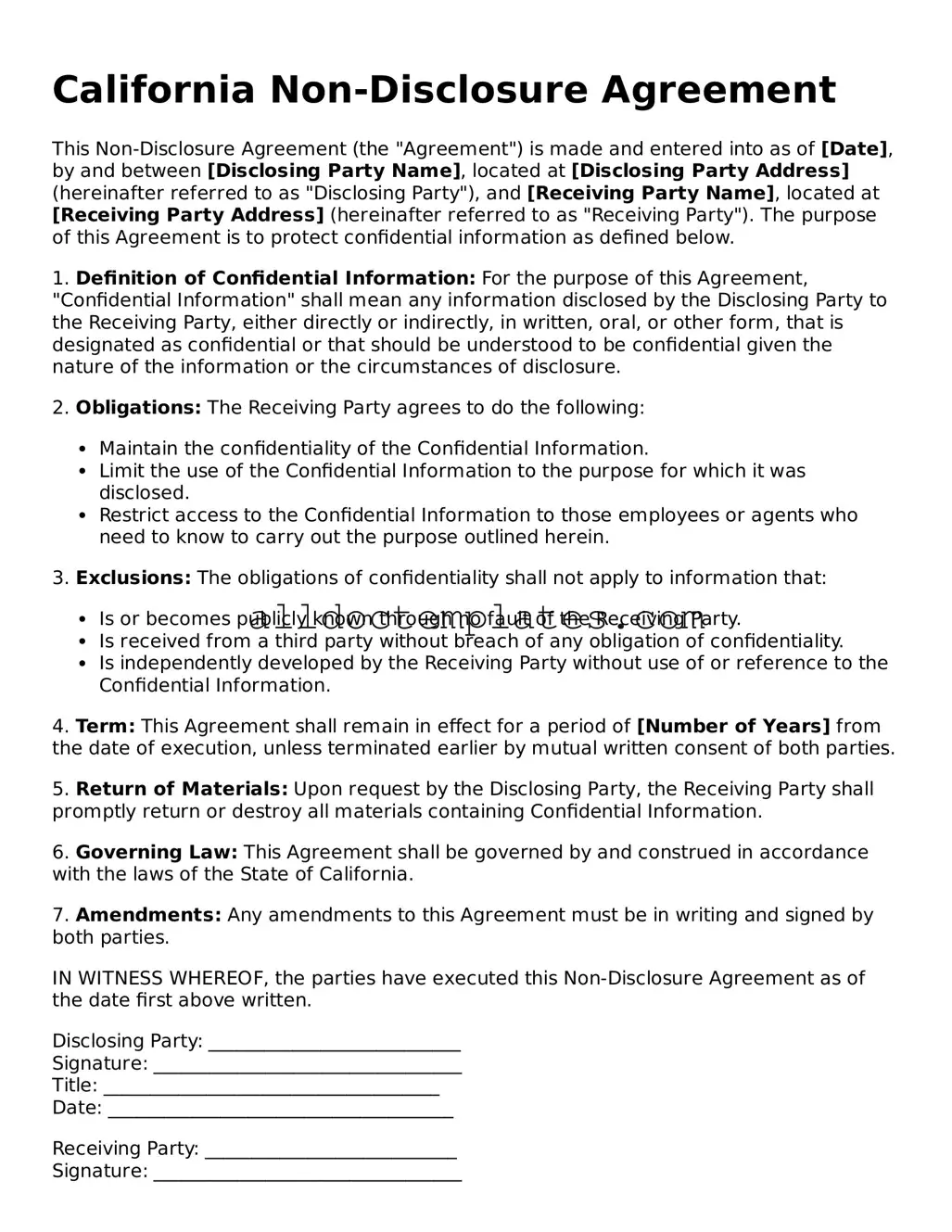California Non-Disclosure Agreement
This Non-Disclosure Agreement (the "Agreement") is made and entered into as of [Date], by and between [Disclosing Party Name], located at [Disclosing Party Address] (hereinafter referred to as "Disclosing Party"), and [Receiving Party Name], located at [Receiving Party Address] (hereinafter referred to as "Receiving Party"). The purpose of this Agreement is to protect confidential information as defined below.
1. Definition of Confidential Information: For the purpose of this Agreement, "Confidential Information" shall mean any information disclosed by the Disclosing Party to the Receiving Party, either directly or indirectly, in written, oral, or other form, that is designated as confidential or that should be understood to be confidential given the nature of the information or the circumstances of disclosure.
2. Obligations: The Receiving Party agrees to do the following:
- Maintain the confidentiality of the Confidential Information.
- Limit the use of the Confidential Information to the purpose for which it was disclosed.
- Restrict access to the Confidential Information to those employees or agents who need to know to carry out the purpose outlined herein.
3. Exclusions: The obligations of confidentiality shall not apply to information that:
- Is or becomes publicly known through no fault of the Receiving Party.
- Is received from a third party without breach of any obligation of confidentiality.
- Is independently developed by the Receiving Party without use of or reference to the Confidential Information.
4. Term: This Agreement shall remain in effect for a period of [Number of Years] from the date of execution, unless terminated earlier by mutual written consent of both parties.
5. Return of Materials: Upon request by the Disclosing Party, the Receiving Party shall promptly return or destroy all materials containing Confidential Information.
6. Governing Law: This Agreement shall be governed by and construed in accordance with the laws of the State of California.
7. Amendments: Any amendments to this Agreement must be in writing and signed by both parties.
IN WITNESS WHEREOF, the parties have executed this Non-Disclosure Agreement as of the date first above written.
Disclosing Party: ___________________________
Signature: _________________________________
Title: ____________________________________
Date: _____________________________________
Receiving Party: ___________________________
Signature: _________________________________
Title: ____________________________________
Date: _____________________________________
